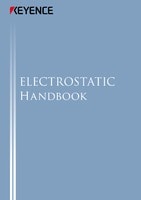Adhesion of Foreign Particles
Adhesion of dust and other foreign particles is often an issue during product manufacturing.
Let’s review what to keep in mind in dealing with foreign particle adhesion.
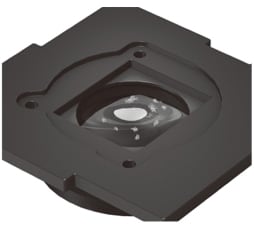
How foreign particle adhesion occurs
How does foreign particle adhesion occur?
How foreign particles adhere to surfaces depends on whether the surface is conductive or non-conductive.
Foreign particle adhesion to conductors
Conductors easily pass electricity, and electric charges move freely within conductors.
A positively charged foreign particle approaching a conductor will make its surface negatively charged. The opposite is also true. Just as the north and south poles of magnets attract each other, the surface of a conductor is charged with static electricity of the opposite polarity of the foreign particle.
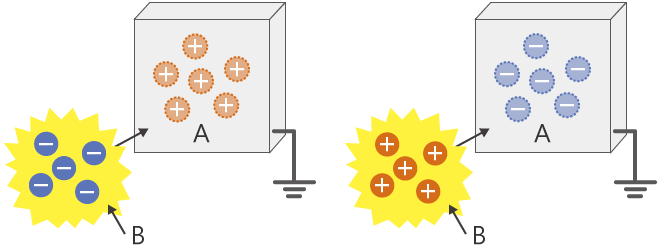
- A: Metal object
- B: Charged foreign particle
As shown here, when an approaching object is pulled toward the surface of a conductor charged with the opposite polarity, it is called electrostatic induction.
When electrostatic induction occurs, the Coulomb force acts between the conductor and foreign particles, which adhere to the conductor.
No matter how thoroughly static elimination is applied to the conductor, electric charge moves freely within the conductor, so electrostatic induction continues to occur and the Coulomb force continues to work between the conductor and foreign particles. Therefore, the only way to stop the adhesion of foreign particles is to eliminate static from the foreign particles.
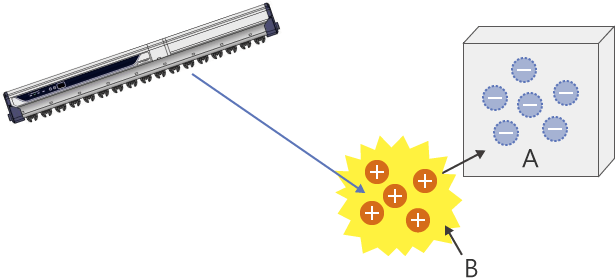
- A: Metal object
- B: Charged foreign particle
Eliminating static from foreign particles prevents adhesion
Foreign particle adhesion to insulators
Adhesion of foreign particles to an insulator only occurs when they are both charged. The Coulomb force acts between the charged insulator and foreign particles charged with the opposite polarity when they are close enough. This causes foreign particles to adhere to the insulator.
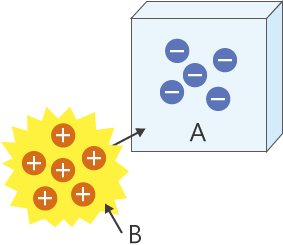
- A: Insulator
- B: Charged foreign particle
In this situation, eliminating static from the insulator or the foreign particles stops the Coulomb force from acting, which prevents foreign particle adhesion.
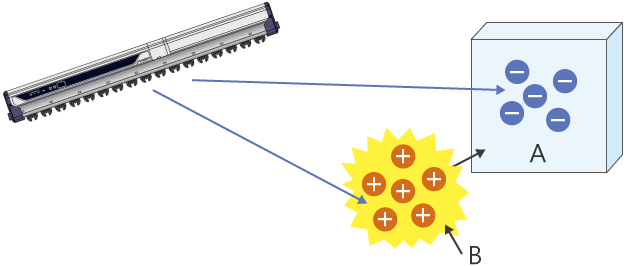
- A: Insulator
- B: Charged foreign particle
Eliminating static from one or the other prevents adhesion
Measures against foreign particle adhesion
Let’s focus on where the airborne foreign particles are and whether the target of adhesion is a conductor or an insulator, and think about possible solutions.
Measures depending on the location of the airborne foreign particles
Airborne foreign particles in the following areas are the most problematic at any manufacturing site:
- Airborne foreign particles found across large areas
- Airborne foreign particles found locally around products
The following introduces measures used for each case.
In both cases, a static eliminator (ionizer) can be used as a measure against foreign particle adhesion.
Measures against airborne foreign particles found in large spaces
A bar type static eliminator (ionizer) can be used for large spaces where airborne foreign particles are present to eliminate static from the entire room. Removing electrostatic charge from airborne foreign particles can prevent them from being attracted to surfaces.

Measures against airborne foreign particles found around products
If the surface is plastic, rubber, or another non-conductive material, and the location of static buildup is known, foreign particle adhesion can be prevented by localised static elimination.
This can be effective even with reduced number of static eliminators as compared to wide-area static elimination.
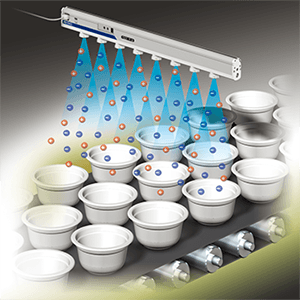
Measures for conductors and insulators
As explained earlier, when working with a conductor it is necessary to eliminate static from the foreign particles, but when working with an insulator, static can be eliminated from either the foreign particles or the insulator.
This means that eliminating static electricity from the space around the target object effectively applies static elimination to both the target object and foreign particles, preventing the adhesion of foreign particles regardless of whether the object is a conductor or insulator. It may not always be necessary to eliminate static from the entire space.
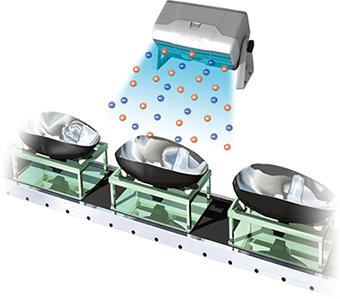
Measures against charging in the human body
There are also times when it is necessary to eliminate static from large spaces. That is when eliminating static from human bodies.
As people move, their bodies continuously build up electric charges, which attract foreign particles and generate charged dust. To constantly eliminate static from people as they move around and prevent the adhesion of foreign particles to people, it is necessary to apply static elimination over large spaces.
The graph below shows the results of our investigation into the electrostatic charge generated by people walking. You can see how the electrostatic charge continuously changes throughout a single step.
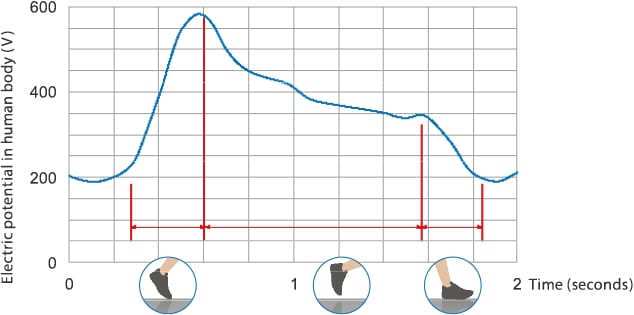
Walking alone is enough to change the electrostatic charge in a person. The effect of all this static electricity is too large to be ignored, so it is necessary to eliminate static from the entire space by installing a static eliminator (ionizer) capable of eliminating static over a wide range.
To eliminate static from large spaces, the neutralising ions must be carried long distances. Some static eliminators (ionizers) can have different cycles (frequencies) over which they generate positive and negative ions. Lower frequencies make for longer emission time of ions of the same polarity, which makes them repel each other and spread wider. In contrast, higher frequencies switch positive and negative ions rapidly, which causes ions with opposite polarities to be attracted to each other and prevents them from traveling for significant distances. The frequency should be set lower for static elimination in large spaces.
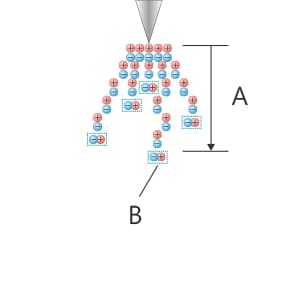
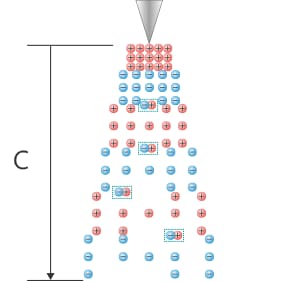
- A: Ions only reach a short distance
- B: Rebonding of ions
- C: Ions diffuse easily due to repulsion between same-polarity ions

